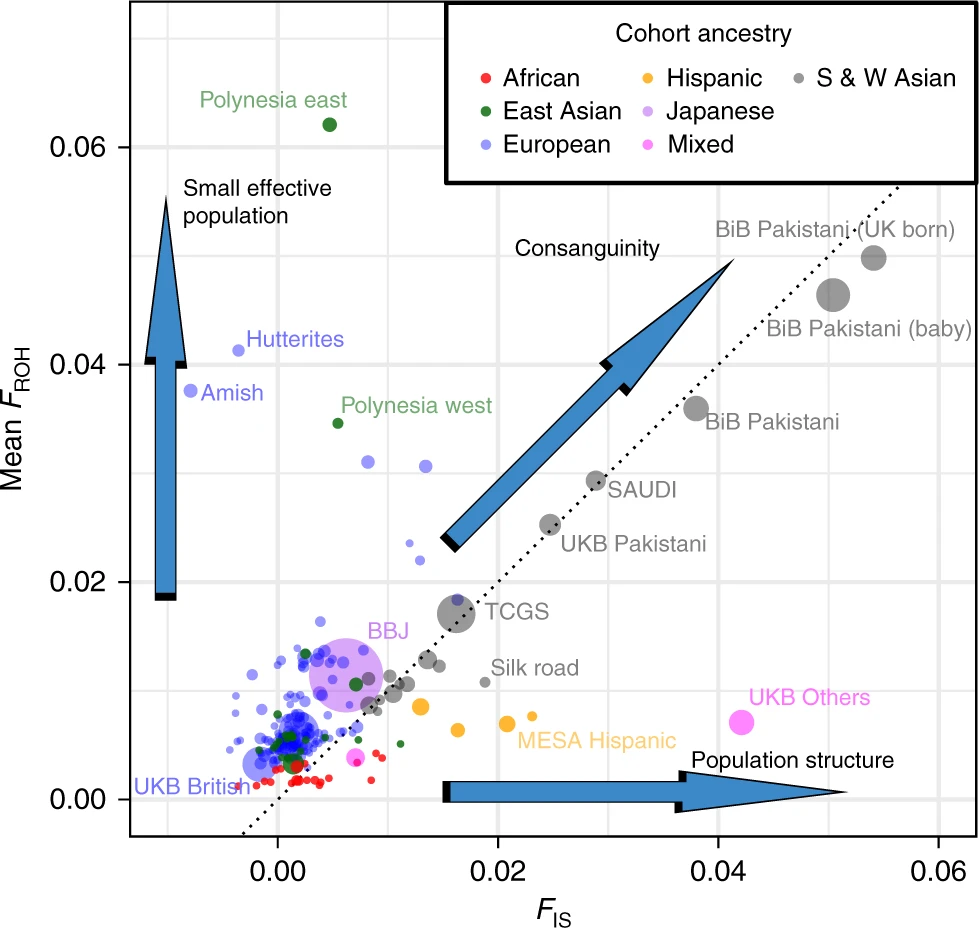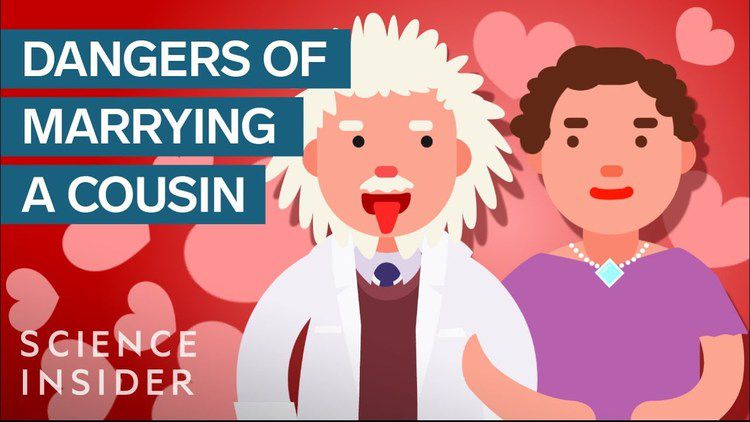

By Steve Sailer
11/01/2019
Here’s a new paper in Nature on inbreeding depression: It’s bad. Don’t marry your first cousin. (Here’s my 2003 article “Cousin Marriage Conundrum.”)
Associations of autozygosity with a broad range of human phenotypes
David W Clark, Yukinori Okada, […]James F Wilson
Nature CommunicationsAbstract
In many species, the offspring of related parents suffer reduced reproductive success, a phenomenon known as inbreeding depression. In humans, the importance of this effect has remained unclear, partly because reproduction between close relatives is both rare and frequently associated with confounding social factors. Here, using genomic inbreeding coefficients (FROH) for >1.4 million individuals,
A sample size of > 1.4 million …
James Lee et al’s 2018 GWAS on educational attainment was the first genetic study I can remember with a 7 digit sample size. Now it’s ho-hum, but it’s still staggering when you stop to think about it. What they are doing is stitching together a whole bunch of different studies on different topics. However, among general purpose databases, the UK BioBank has the genetics of 500,000 people, while BioBank Japan has another 200,000.
we show that Froh is significantly associated (p < 0.0005) with apparently deleterious changes in 32 out of 100 traits analysed. These changes are associated with runs of homozygosity (ROH), but not with common variant homozygosity, suggesting that genetic variants associated with inbreeding depression are predominantly rare.
This study confirms the old idea that everybody has a bunch of rare recessive deleterious mutations that aren’t too bad for you if you only inherit one from your parents, which is why they are still around: Natural selection doesn’t rapidly weed out rare recessive bad genes precisely because they are rare and recessive. But if your parents are closely related and thus give you two of the same recessive bad genes, uh oh …
The effect on fertility is striking: FROH equivalent to the offspring of first cousins is associated with a 55% decrease [95% CI 44–66%] in the odds of having children.
There are lots of other bad effects as well, such as that inbred people tend to walk slower, have weaker grips, and so forth.
A 55% decrease in fertility is a big toll. Why didn’t West Asians and South Asians notice how bad cousin marriage was earlier?
One reason is because children used to die so often from infectious diseases that genetic defects were not as obvious. For example, Charles Darwin, the grandson of perhaps the most famous doctor in England, married his first cousin, a Wedgewood. His ten children tended to be intelligent but sickly. He tasked one of his sons to study the question of whether cousin marriage was bad, but his son reported: Don’t worry about it, dad.
I am under the impression that the ill effects of cousin marriage were proven by American eugenicists late in the 19th Century. But the Catholic church had long before come down against marriage with up to your fifth cousin. See HBD Chick for the profound social implications of this.
As dying of cholera or whatever has waned, West and South Asians started to notice that cousin marriage leads to hereditary problems.
Another reason might be that cousin marriage wasn’t as common in the past. My impression is that cousin marriage in the Middle East has increased as public health has improved and childhood mortality has gone down. Say that in 1850, the average Middle Eastern marriage led to a replacement level two children surviving to reproduce. (My impression from Mark Twain’s visit to the Holy Land is that the population was fairly sparse and not growing rapidly.)
That would mean that the median individual would have only two first cousins, and on average only one would be of the opposite sex. Many times individuals would have no cousins of the opposite sex, so no marriage could be arranged, and other times the age differences or whatever would work against a first-cousin marriage being feasible.
Fast forward to, say, 1970 and the average number of children surviving to reproduce might now be four. So now the average individual might have twelve first cousins, six of the opposite sex. So a suitable cousin marriage is easier to arrange. My vague impression from consang.net is that cousin marriage in the Middle East has been in decline in this century. But it still seems to be going strong among Muslims in Europe, in part because it ties into immigration fraud nicely: force your Bradford-born daughter to marry your brother’s son back in Pakistan and provide him with a visa.
Finally, the effects of FROH are confirmed within full-sibling pairs, where the variation in FROH is independent of all environmental confounding.
Populations high on the vertical axis, such as Polynesians and Amish, are descended from small founding colonies in the past. The horizontal axis measures inbreeding in the present, with populations to the left of 0.00, such as the Amish, Hutterites, and the British going out of their way to avoid inbreeding. The diagonal line measures consanguinity, with UK Pakistanis being exceptionally inbred. The gray dot furthest up in the upper right is Born in Bradford Pakistani (UK born).
The good news is you can fix a lot of the genetic harms of cousin marriage in one generation by not marrying your cousin. On the other hand, perhaps it’s hard for these sickly inbred people to find spouses outside of arranged cousin marriages?
This is a content archive of VDARE.com, which Letitia James forced off of the Internet using lawfare.